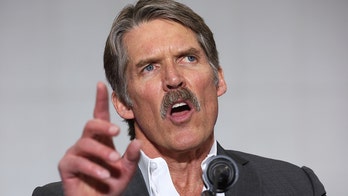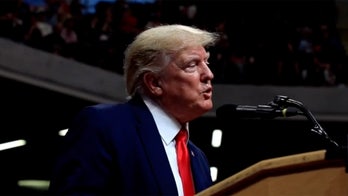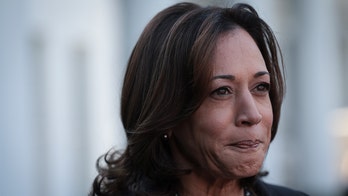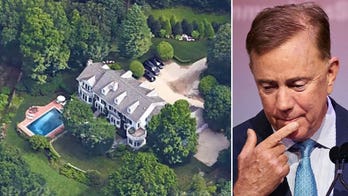CIA Director Leon Panetta said Tuesday that the Obama administration will "ultimately" release a photo showing the body of Usama bin Laden even though the White House insists that a decision is still being weighed.
In an interview with NBC's "Nightly News" that aired Tuesday night, Panetta said, "The government obviously has been talking about how best to do this, but I don't think there was any question that ultimately a photograph would be presented to the public."
After the interview, Panetta told Fox News that the White House makes the final decision.
"I think it will be," he said about the possibility of a photo being released. "I don't think you have to convince the world because of the DNA. I just think it's important they know we have it."
But senior aides at the White House say there are still concerns and sensitivities involved in the decision on whether to release a photo. Some members of the administration believe no photo should be released.
- Usama Bin Laden
- Radical Cleric Tied to Bali Bombings Says Death of Usama bin Laden Won’t Kill Al Qaeda
- Obama Weighed Several Options Before Sending Navy SEALs to Get Bin Laden, Sources Say
- Obama’s Post-Kill Strategy Begins to Emerge
- Bush-Era Interrogations Provided Key Details on Bin Laden’s Location
- Bin Laden Raid Underscores Need for Joint Military-Intelligence Efforts, Analysts Say
In the interview, Panetta also admitted it was likely that intelligence gleaned from so-called "enhanced interrogation techniques" -- including waterboarding -- contributed to Sunday's raid.
"It's a little difficult to say it was due just to one source of information that we got ... I think some of the detainees clearly were, you know, they used these enhanced interrogation techniques against some of these detainees," he told Williams.
"But I'm also saying that, you know, the debate about whether we would have gotten the same information through other approaches I think is always going to be an open question."
When specifically asked whether "enhanced interrogation techniques" included waterboarding, Panetta replied, "That's correct."
But U.S. officials maintain that waterboarding did not provide the initial intelligence. They specifically note that Khalid Sheik Mohammed provided the alias for the courier -- which led to the major breakthrough in the hunting down bin Laden -- three to four months after he was waterboarded.
At the heart of the Obama administration's deliberations on whether to release photos and video footage of the firefight that killed bin Laden Sunday is the possibility that it could quell conspiracy theories but also incite violence.
A U.S. official told Fox News that while a photo of bin Laden would help prove his death to skeptics, there is a reluctance to take any step that would feed the narrative that he was in any way a "martyr." Plus the White House is being careful not to inflame Islamic sentiment by showing graphic images of the body.
"It's fair to say that it's a gruesome photograph," White House Press Secretary Jay Carney said Tuesday, adding that part of the consideration is that the photo "could be inflammatory."
White House counterterrorism adviser John Brennan has said over the past two days that officials are carefully considering whether and how to release that evidence. Brennan said the administration, which so far has pointed to DNA tests and first-hand accounts to confirm his death, wants to make sure "nobody has any basis to try to deny" that the U.S. killed the terror leader.
"We want to make sure that not only the American people, but the world, understand exactly what happened," he said. "At the same time, we don't want to do anything that's going to compromise our ability to be as successful the next time we get one of these guys and take them off the battlefield. ... The releasing of information and whether that includes photographs, this is something to be determined."
A few lawmakers have sought to persuade the administration to release the evidence, despite reservations.
Sen. Susan Collins, R-Maine, and Joe Lieberman, I-Conn., both of whom sit on the Armed Services and Homeland Security Committees, conceded in a news conference Monday that it may be necessary to release the photo.
Lieberman said that it was a "very difficult decision" to make, but that a photo release would help to quell doubts. Collins echoed her colleague, explaining that while she has "no doubt" bin Laden is dead, there are some that could peddle a myth that he is alive.
House Intelligence Committee Chairman Mike Rogers said it's important to "maintain dignity," while not inflaming falsehoods and tension worldwide.
At issue were photos of bin Laden's corpse and video of his swift burial at sea. U.S. officials say the photographic evidence shows bin Laden was shot above his left eye, blowing away part of his skull.
He was also shot in the chest, they said. This, near the end of a frenzied firefight in a high-walled Pakistani compound where U.S. forces found 23 children, nine women, a bin Laden courier who had unwittingly led the U.S. to its target, a son of bin Laden who was also killed, and more.
Bin Laden had lived at the fortified compound for six years, officials said, putting him far from the lawless and harsh Pakistani frontier where he had been assumed to be hiding out.
The Associated Press contributed to this report.




